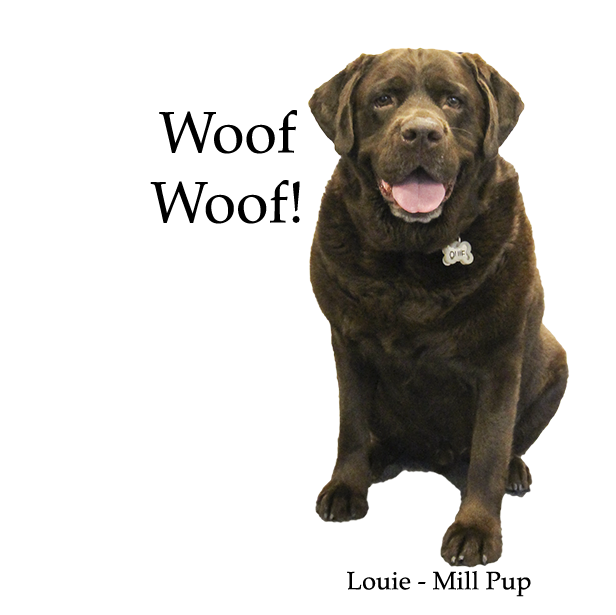Recent Blog Posts
-
10/10/2025VIDEO: How often does a Survival Sock get knit at NEAFP?
-
09/12/2025NEW Downloadable Content: Alpaca Dinner Time Coloring Page
-
08/15/2025Reviews: What People are Saying About Bouclé Lined Mittens!
-
08/15/2025Get Ready for NAFD! 5 Ways to make the most out of your Open House!
-
06/26/2025NEW Downloadable Content: Find the Difference Activity Page
-
04/25/2025VIDEO: Take a Virtual Tour of our Mill!
-
01/17/2025Reviews: What People are Saying About The Survival Sock!
-
09/13/2024Download A Free Handwear Informational Print Out!
Alpaca Coloring Pages
- Happy Memorial Day 2024: Alpaca's Grazing
- Winter #1: Build a Snowman Activity
- Winter #2: Extreme Sports
- Valentine's Day: Alpaca Wedding
- St. Patrick's Day: Leprechaun
- Spring: April Showers
- Summer: Beach Day
- 4th of July: Colonial Alpacas
- Summer: Farmer's Market
- Fall: Apple Picking
- Halloween #1: Costume Contest
- Halloween #2: Spooktacular Halloween
- Thanksgiving #1: Giving Thanks Activity
- Thanksgiving #2: Pilgrim Alpacas
- Christmas #1: Deck the Halls
- Christmas #2: Santa's Workshop
Alpaca Fact Series
Business Resources
- Article: Email is still a MUST DO for all Alpaca Farms
- Article: Off the Beaten Path Event Ideas on the Alpaca Farm
- Download: Sock Photo Download Folder
- Graphics: Shop Small this Holiday Season
- Article: Form Follows Function: Dressing for Fall and Winter 2020
- Graphics: Sock and Handwear Comparisons
- Article: A Change in the Seasons: Farms Continue to Adapt into the Busy Harvest Season
- Graphics: How to Support Alpaca Farms
- Graphics: Alpaca Fiber Properties
- Article: Customer Retention: Building Customer Loyalty for your Ecommerce Business
- Article: Harnessing Storytelling to Market Your Business
- Article: The New Normal and a Renewed Support for U.S. Alpaca
- Article: Use Gift Cards to Increase Sales
- Article: Virtual Farm Tours: Bringing People & Alpacas Together in the Virtual World
- Graphics: Get the Most out of your Fiber Harvest
- Graphics: Alpaca Knitter's Yarn Guide
- Article: Mike and Sean's Adventure in Retailing
- Article: Harnessing Holiday Sales Momentum into the New Year
- Graphics: U.S. Alpaca Holiday Gift Guide
- Graphics: Small Business Saturday Resources
- Article: Tools and Topics for Implementing Healthy Soil Agriculture
- Article: Successful Social Media Marketing for Alpaca Farms
- Article: Agritourism on the Alpaca Farm
- Article: Finding Success at Fall and Winter Markets
- Article: Brand Identity & Your Local Community
- Article: Social Media: Alpacas are STILL Seriously Trending
- Article: Let's Get Personal: Expanding your Inventory with Product Personalization
- Article: Part 2: Promoting your Brand Online through Product Styling
- Article: Promoting your Brand Online through Product Styling
- Article: 7 Old School Ways to Spread the Word about your Event
- Article: 5 Ways your Open House can increase Future Sales
- Article: Top Alpaca Related Hashtags to increase your Reach!
- Article: Alpacas are SERIOUSLY Trending
- Article: How to Utilize CO-MARKETING
- Article: Farmers Share their Booths and Tips
- Article: Mobile Payment Survey Results
- Article: Product Photography Do’s and Don'ts
- Article: Driving Business After the Holidays
- Article: Marketing Reflection and Planning
- Article: The Slow Alpaca meets Slow Fashion
- Article: Use Gift Cards to Increase Sales
- Article: The Importance of Being Mobile Friendly
Article: Brand Identity & Your Local Community
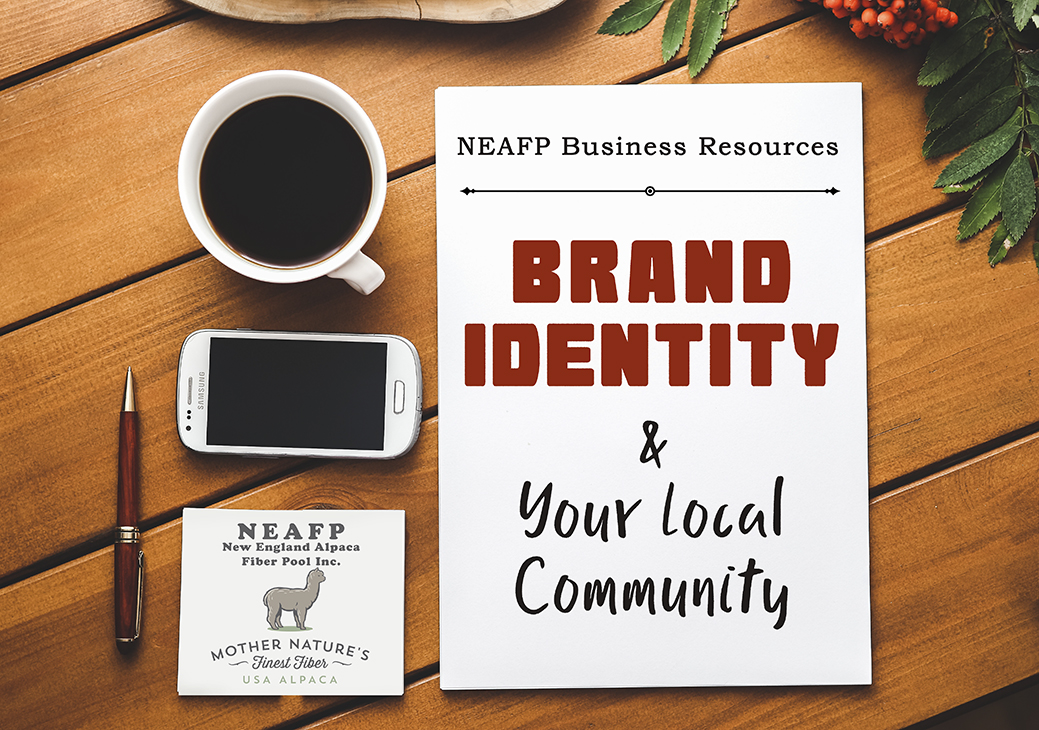
Once shearing is behind you, and you’ve taken some time to breathe, you may find it worthwhile to review your branding strategy for the coming year.
As we’ve discussed before, it is important to understand and use different branding strategies to achieve success. From choosing and photographing your products, to exploring different avenues of social media marketing, now is the time to reflect on the messages you hope to communicate to your potential customers. Most farms could not be successful without patronage by their local community members, who look to them for alpaca products, educational information and opportunities to engage with the animals. The way that you brand yourself can make you a more visible authority on all things alpaca, driving your influence in your local community.
Educate and Communicate
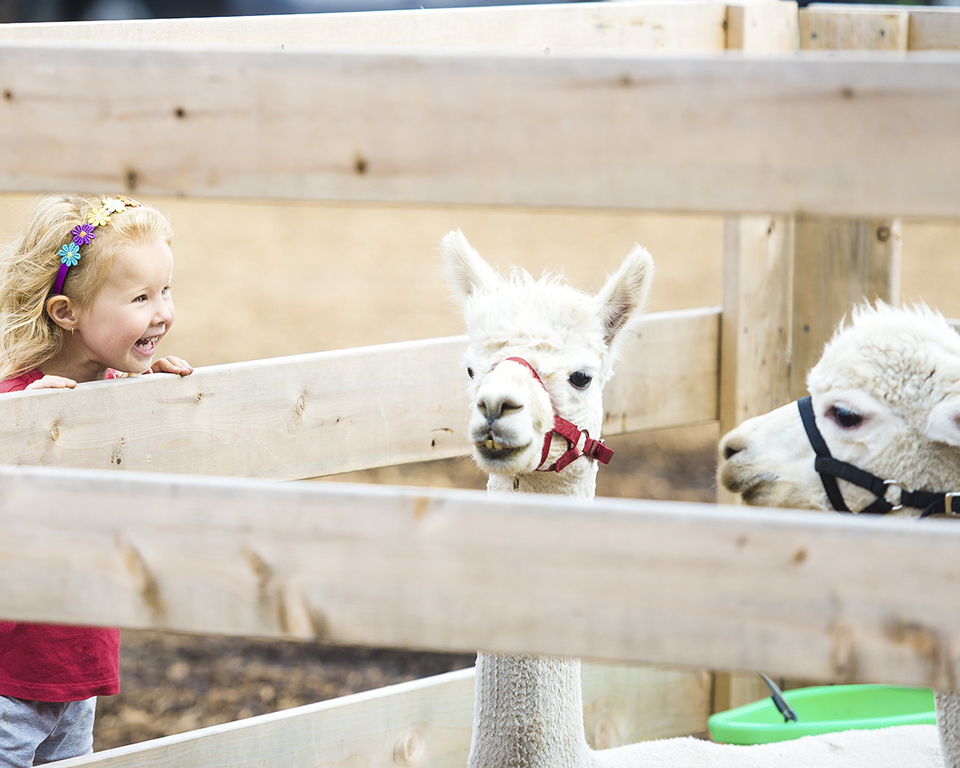
Rather than considering yourself solely an alpaca farmer that sells alpaca products, envision your farm as an important community resource. If possible, take on a leadership mentality and become the local authority on alpacas and alpaca products. Put extra effort into educating your customers so that they know to return to you with further questions about alpacas. They will appreciate the information, and will likely associate your knowledge with higher quality products. Customers are more likely to invest in your brand if it is a cause that they support or trust, so take the time to communicate with potential customers transparently.
How can you put this into practice? A good example is the recent interest in “pet” alpacas. It is wise to have educational material posted at booths and farms to dispel rumors or myths in the first place. However, once you receive such an inquiry, rather than alienating the potential customer who is interested in a “pet” alpaca, invite them to visit your farm and explain how alpacas operate within a herd. You can invite this person to return to visit your happy herd in the future, while (hopefully) discouraging them from acquiring one as a pet.
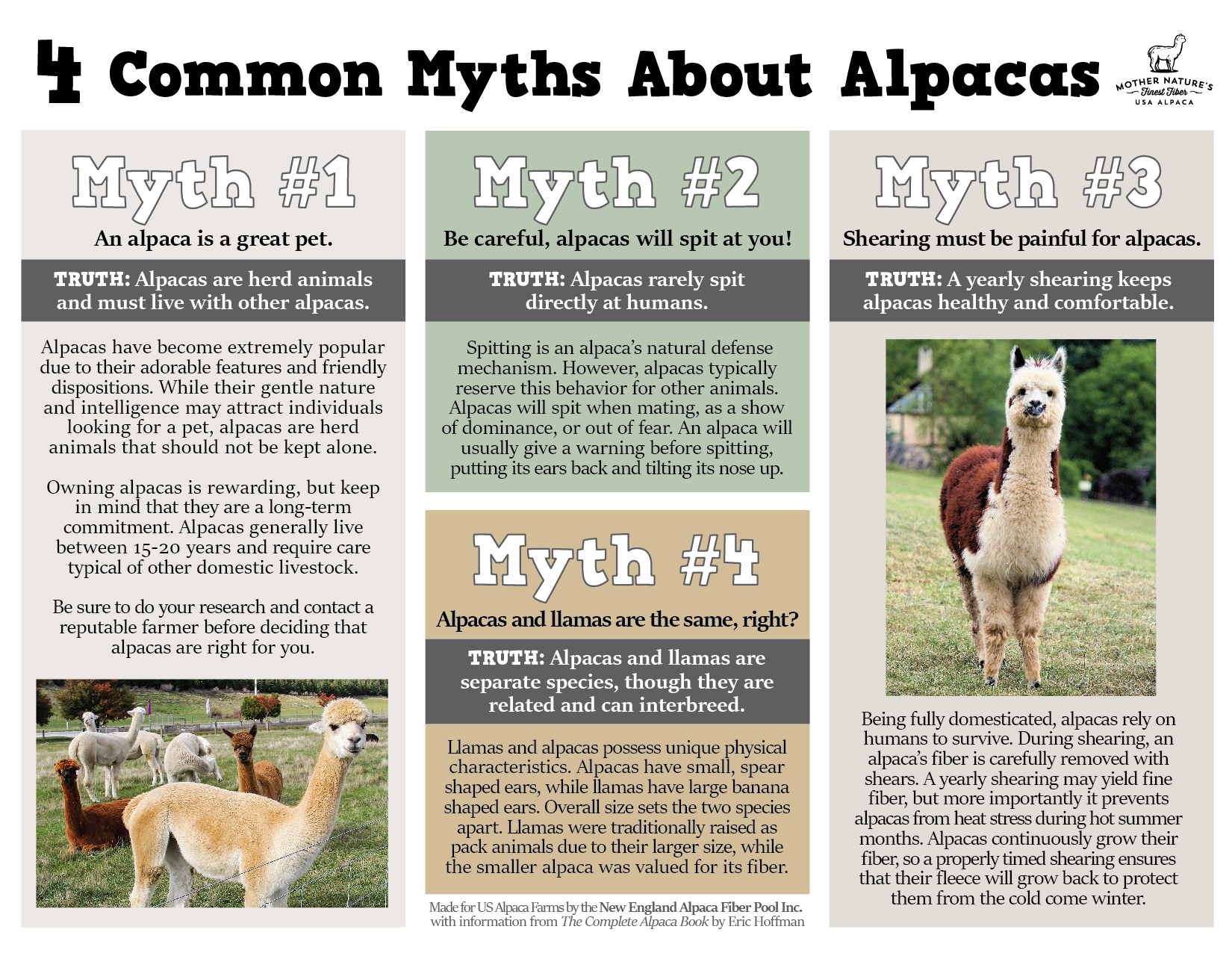
Did you miss our Downloadable Poster on Alpaca Myths? Head here to download a full-size version to post at your farm store!
Get Involved

In addition to becoming an educational resource, strive to become an active member of your local community. Don’t forget that your farm itself can be an important community space, as many alpaca farms have begun offering their site as an event space for fitness activities like yoga and private events like weddings. Consider reaching out to local portrait photographers to see if they’d be interested in using your property as a shoot location! While you may already participate local market events, think about other ways to increase your brand recognition through community engagement. Go to local events with alpacas, even out of market season, and remember to keep your social media active!
Here are some other ways to get involved:
-Donate a product to a local charity auction/raffle
-Sponsor a youth sports league
-Volunteer at a local event
-Visit schools, hospitals, or retirement communities
-Partner with another organization for a special project
Creating Memorable Branding Elements
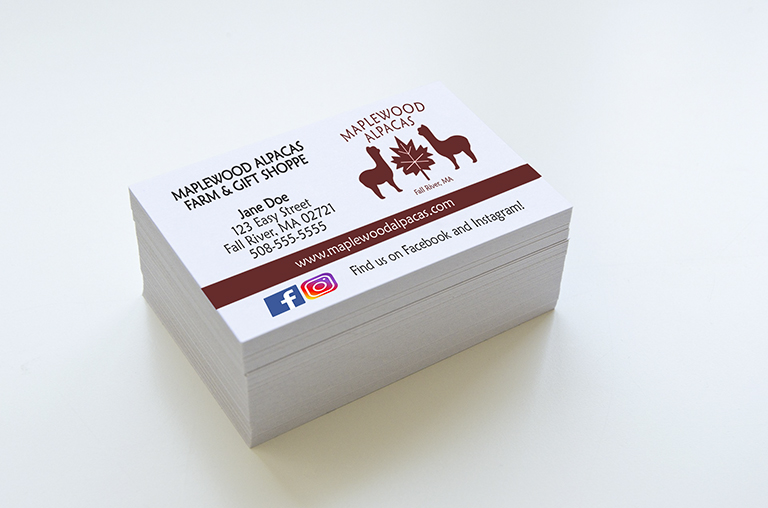
Creating memorable branding elements can raise greater value or equity in your brand, by raising recognition among your customers and local community. Your brand name, logo, any slogans you may use are just a few examples of branding elements. These elements should be unique enough to set you apart from your competition, while being relevant to your role as an alpaca farmer and producer of alpaca goods.
Your brand name, in this case your farm or farm business name, should ideally be easy to pronounce and spell, and unique but not over the top. It should resonate with potential customers and signal to them who you are and what you do.
If you’re in the process of branding your farm many individuals take into consideration their name, their location, and the qualities of their alpacas in creating a name for themselves.
A logo is an important tool to use across your marketing collateral: on business cards, websites, labels, and market booths, as a form of identification. Like your brand name, your logo should tell your story to the public. It should be simple, yet also relevant and communicate information about your brand. Consider also the color of your design elements, which can change the overall feeling of your brand.
For this article, we came up with a fictional Alpaca Farm to give an example of one route to take:
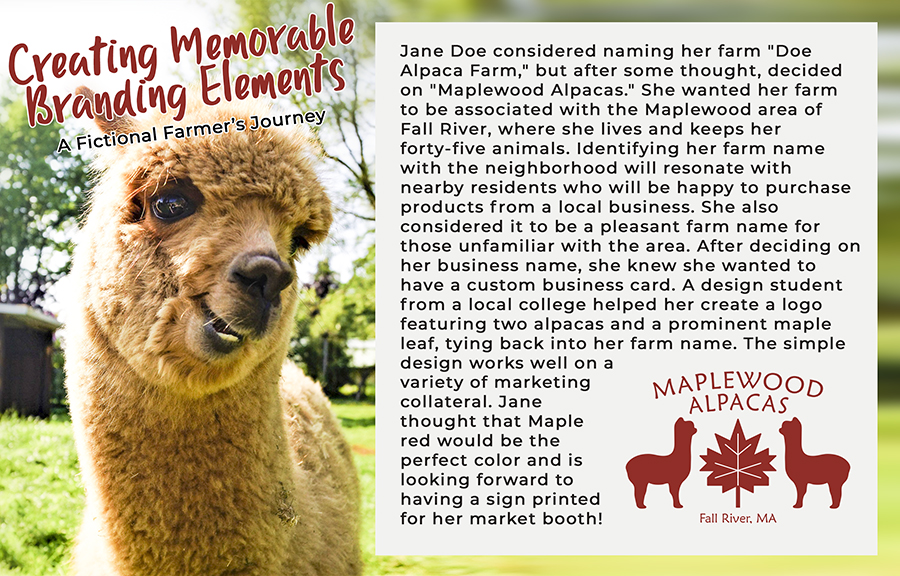
Time to Start Somewhere
Sure, it seems like a lot to take in, but there’s no better time to begin considering your brand! Start small by filling out a branding worksheet, many of which can be found online. Good Egg Marketing’s Brand Identity Worksheet is a great example of a worksheet designed to help you gain valuable insight about your brand.
We hope that these Business Resource Blog Posts have been helpful. Is there a topic you'd like us to cover in a future post? Write to us at support@neafp.com


